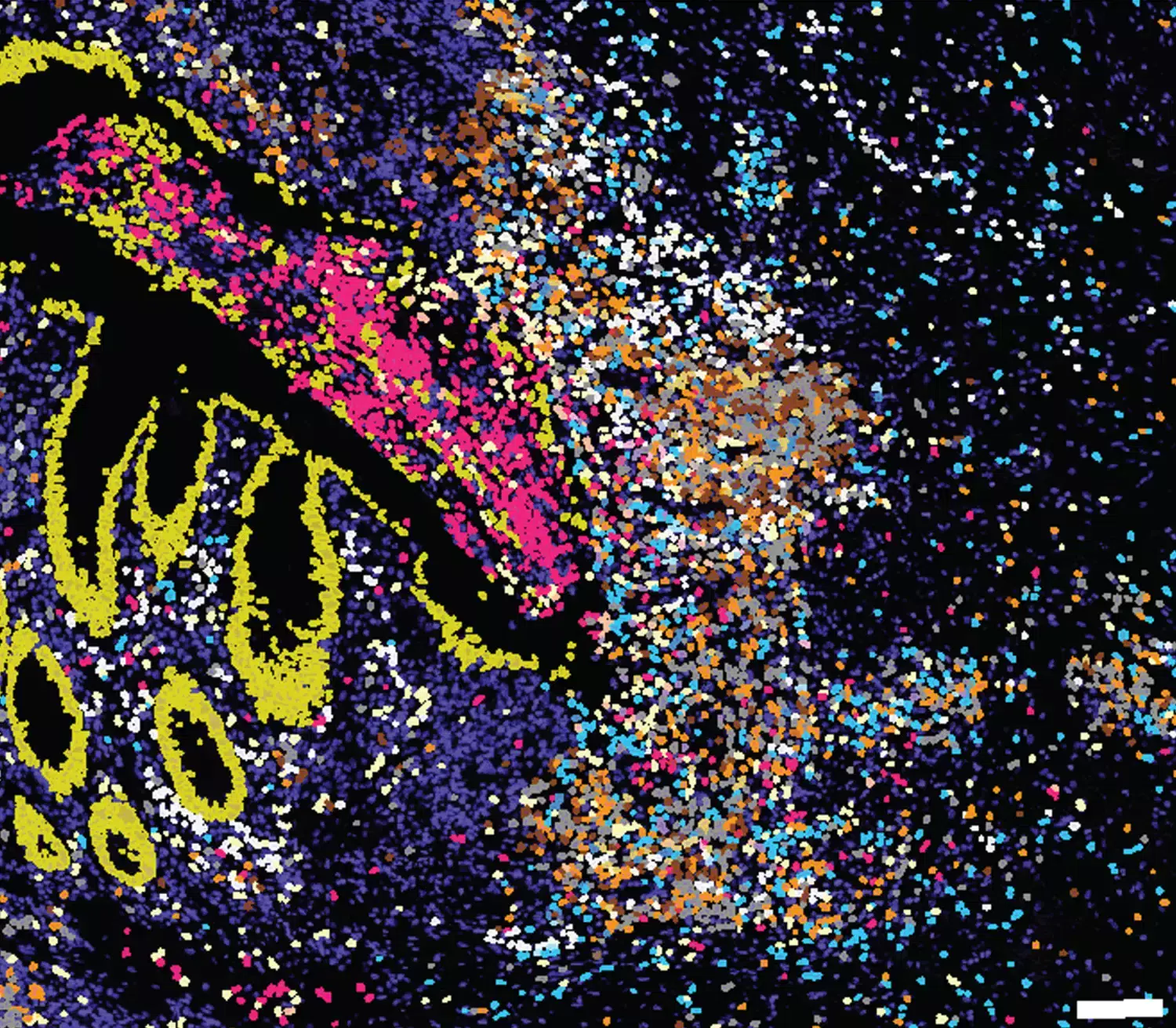Center for Infectious Medicine acquires new technology that can lead to ground-breaking discoveries

As the first research unit in the Nordic region, the Center for Infectious Medicine at the Department of Medicine, Huddinge (MedH), has acquired the MACSima™, a technology that enables high-plex immunofluorescent imaging and spatial biology. The new technique acquires microscopy data for a multitude of parameters without harming the sample and will empower cutting-edge research.
The Center for Infectious Medicine (CIM) at the Department of Medicine, Huddinge (MedH) has acquired the MACSima™. A technological platform from Miltenyi Biotec, that enables immunofluorescent imaging of hundreds of protein markers across a single specimen at subcellular resolution. The new technology allows researchers to image all types of fixed samples, whether it is tissue or single cells. CIM is the first research unit in the Nordic region to acquire this technological platform.
Acquires a multitude of data without harming the samples
The MACSima™ technology uses the principle of cyclic staining with different fluorochrome-conjugated antibodies to acquire microscopy data for a multitude of parameters without harming the sample. The cyclic process comprises three main steps that are conducted by the MACSima™ in a fully automated manner. After staining with fluorochrome-conjugated antibodies and image acquisition of the stained sample, the fluorescent signal can be erased by either Photobleaching or Fluorochrome release.
As the tissue samples are left intact, the MACSima™ is also compatible with other technologies and thereby provides a first step for high-content, single-cell analyses for basic research as well as a basis for similar high-content, single-cell analyses for pathology in the tissue environment.

Allows researchers to explore previously uncharted territories
The MACSima™ enables the identification and deep phenotyping of cell subsets and identification of novel cell types, their spatial distributions and interactions. In addition to identifying immune and non-immune cells in tissues, the technique also makes it possible to examine their metabolic status. The analytical platform has great potential to advance our current understanding of cell and tissue biology, and potentially identify new biomarkers and targets for immune therapy.
The MACSima™ technique has the potential to overcome limitations of current multiparametric technologies and to complement single-cell experiments.
“The technique represents a leap forward in our field. Its capabilities allow us to explore previously uncharted territories, uncover hidden patterns, and gain deeper insights into complex settings in health and disease. This technology empowers researchers to make pioneering discoveries and to be at the forefront of spatial biology.” says Mattias Svensson, researcher at CIM.
Can promote new research avenues and collaborations
The MACSima™ allows researchers to conduct more comprehensive experiments and enables thorough investigations, leading to robust findings. Leveraging the technique to address research questions in unique ways can lead to novel discoveries, which will positively impact research and innovation.
Introducing the MACSima™ platform equips students and early-career researchers with cutting-edge skills by learning to navigate advanced tools and analyze complex data sets. This knowledge prepares them well for their future career in academia or industry.
“Also, the technique can foster new collaborations. Researchers from different backgrounds can meet, exchange ideas, and jointly address scientific questions. Collaborations amplify our impact and broaden our scientific networks.” Says Mattias Svensson.
